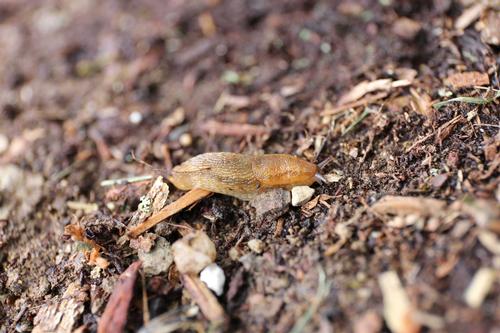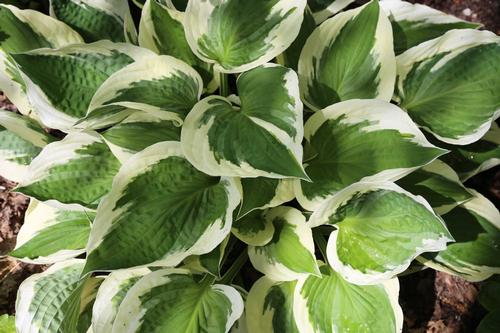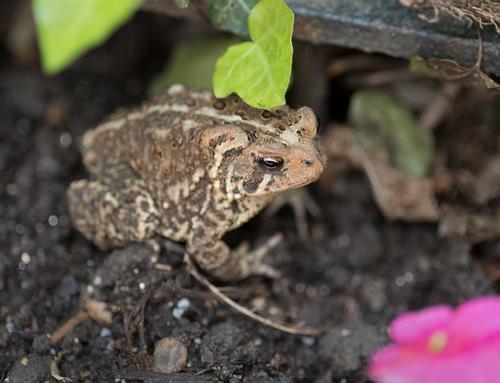
Both of these pests are mollusks (like oysters and clams) so regular garden insecticides are usually ineffective. The best way to control these spineless villains is to attack from several directions.
Make Them Unwelcome
Slugs and snails feed mainly at night. By day they retreat to moist, dark places under leaves, pots and mulch. To make your garden less appealing, keep soggy leaves away from your plants. Put away unused pots and clutter that could provide hiding places. Wait to mulch until early summer when the soil and air is drier. Cut off spent flowers and remove dead or damaged leaves to encourage good air circulation. In the fall, raking up leaves and cleaning up garden debris will make it more difficult for adults and eggs to overwinter.

Choose Resistant Plants
Slugs and snails eat by dragging their file-like mouthparts over the surface of a leaf. Thin, tender leaves, such as lettuce, basil, dahlias and delphiniums are easy for them to eat. Leaves that are thick, leathery, hairy or waxy resist their attacks.
Hostas are known to be a slug magnets, but some varieties are more resistant than others. Sum and Substance, Bressingham Blue, Blue Ivory and Patriot (shown at left) have thick leaves with a waxy coating and are rarely bothered.

Stop Future Generations
The places where slugs and snails hide are the same places they lay their eggs. Staying on top of the problem will minimize future damage. There are several ways to trap these pests. You can put rolls of moist newspaper or damp boards in the garden. They'll gather beneath them and then you can throw out the paper or scrape off the board. To make a beer trap, sink a yogurt container into the ground so 1" of it is still above the soil surface. Fill more than half full of beer. Cut two 1" holes in the lid and replace it to keep rain from diluting the beer. Slugs will crawl in and drown.
Both of these pests can be killed by sprinkling them with salt or spraying them with an ammonia solution. Just remember that these chemicals can also kill plants and soil life, so be careful how you use them. Iron phosphate is another effective organic control. It’s the active ingredient in a popular bait called Sluggo. Note the tell-tale signs of slug damage on the dahlia leaves shown at left.
Use Physical Barriers
Slugs and snails don't like crawling over rough surfaces. Coffee grounds, eggshells, wood ashes, diatomaceous earth, and even gravel can be used to deter them. Copper is another material they avoid and it can be used to create a barrier around pots or garden beds. Window screening can also be used to create a barrier.

Water In the Morning
The single best way to reduce damage is to keep plant and soil surfaces as dry as possible – especially overnight. Always water in the morning rather than in the evening, so surfaces are dry by the end of the day. Avoid overhead watering, as wet leaves are more vulnerable to damage. In areas with high rainfall, give plants extra space to promote good air circulation.
Encourage Natural Enemies
Frogs, toads, snakes, birds, turtles, ducks, and even chickens will eat slugs, snails and their eggs. Some of the birds known to eat slugs include blackbirds, thrushes, robins, starlings, jays, seagulls, and even owls.
To find out how your garden can be a more welcoming place for these natural predators, read: How to Design a Bee-Friendly Garden.
Coping with these slimy garden pests can be frustrating, but don't despair. By combining several of these techniques you can minimize their damage and still enjoy a beautiful and productive garden.
